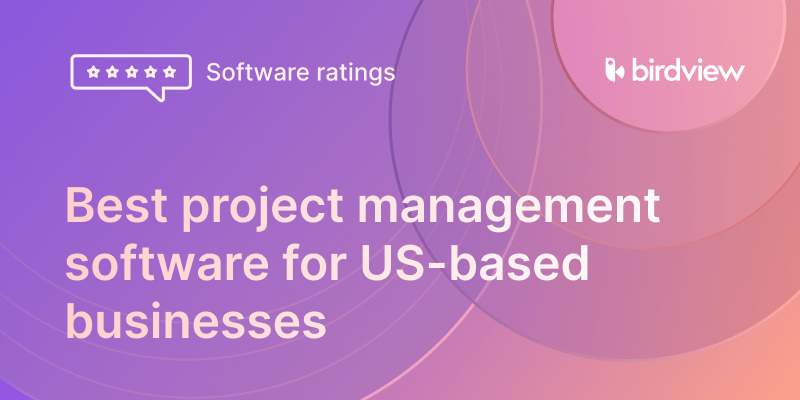Microsoft is retiring Project Online. For organizations that have relied on this platform for years, this change raises critical questions about data, workflows, and what comes next. There is time to plan. Still, do not put the work off. In this article, we will break down exactly what’s happening with Microsoft Project Online, what it means for your organization, and the practical steps you need to take now to prepare for the transition.
What’s happening with Microsoft Project Online
On September 5, 2025, Microsoft officially announced that Project Online is being phased out as part of Microsoft‘s move to cloud services. While the platform is still operational, Microsoft has made it clear that Project Online is no longer the future of its project management offerings.
Today, Microsoft is shifting its investments toward Planner (premium + standard), Project for the Web (as part of Planner), and features in Microsoft Copilot, such as the Project Manager agent.
It‘s important to note that:
- Project desktop (the locally installed app) is NOT impacted
- Microsoft will continue to support and provide performance/security updates for Project Online until retirement
- But after the retirement date (September 30, 2026), no further access or functionality will remain
When is Microsoft Project Online retiring?
Microsoft has outlined a gradual retirement timeline for Project Online. As of October 2025, Project Online is still fully operational, but Microsoft has stopped investing in major new features. The platform is in maintenance mode, receiving only critical updates and security patches. Microsoft has also confirmed that no significant functionality will be added to Project Online. All innovation is focused on Project for the web and the broader Power Platform.
Here is a simplified timeline you should anchor in your planning:
What it means for your projects and data
The retirement of Microsoft Project Online will affect teams and data. Especially if you‘ve been using it for most of your project and operations management. Here’s what’s at stake:
- Your project data and history
Project Online likely contains years of valuable information: project plans, resource assignments, timesheets, financial data, and historical reports. If this data isn’t properly migrated, you risk losing critical institutional knowledge and audit trails.
- Ongoing projects in flight
Projects currently being managed in Project Online will need to continue without interruption. A rushed or poorly planned migration could disrupt active work, confuse team members, and create gaps in reporting.
- Integrations and workflows
If you’ve integrated Project Online with other systems, like Power BI dashboards, SharePoint sites, or other applications, those connections will break when Project Online is retired. You’ll need to rebuild these integrations with your new platform, which takes time and technical resources.
- Reporting and portfolio visibility
Many organizations rely on Project Online for portfolio-level reporting, resource utilization analysis, and executive dashboards. Losing access to this reporting infrastructure means you’ll need to recreate these views in a new system.
- Team productivity and morale
Change is hard. If your team is comfortable with Project Online, switching to a new system requires training, adjustment, and patience. A poorly managed transition can frustrate users, reduce productivity, and create resistance to the new platform.
- The cost of waiting
Procrastination can be costly. Organizations that delay migration until the last minute often face higher expenses due to rushed implementation, limited vendor availability, and much more.
What you should do before Microsoft Project Online retires
Don’t wait for Microsoft’s final deadline. To mitigate risk and ensure a smooth transition, here are actionable steps your team can begin immediately.
1. Assess your current usage
Start by understanding exactly how your organization uses Project Online today:
- What features do you actively use? Project scheduling? Resource management? Timesheets? Portfolio analysis? Financial tracking?
- How many projects do you manage? Are we talking dozens or hundreds?
- Who uses the system? Project managers, resource managers, executives, team members?
- What reports and dashboards are critical? Which views would cause problems if they disappeared tomorrow?
Create a detailed inventory of your current use cases. This will be your requirements checklist when evaluating alternatives.
2. Audit your integrations
Map out every system that connects to Project Online (Power BI, SharePoint, Microsoft Teams, etc.). For each integration, ask: How will this work with the new platform? Who owns this connection?
3. Back up your data NOW
Don’t assume that migration tools will perfectly capture everything. Export project plans in multiple formats (MPP files, Excel, PDF) and save custom reports that you’ve built over the years. Capture resource calendars and availability settings, and export portfolio data and project hierarchies. Store these backups in a secure location separate from Project Online.
4. Evaluate replacement options
Not all project management platforms are created equal. There are plenty of Microsoft Project Online alternatives to choose from. When evaluating replacement options, ensure the new platform matches or exceeds your current Project Online setup. Especially for advanced needs like resource leveling, portfolio analytics, and financial management. Check that it can scale with your organization and integrate smoothly with your existing tools to avoid manual work. Finally, consider the total cost of ownership, including implementation, training, and ongoing support.
5. Build a migration plan
Treat this transition like what it is: a major organizational project. Your plan should include:
- Timeline: When will you select a platform? When will you migrate? When will you shut down Project Online?
- Roles and responsibilities: Who owns the migration? Who makes decisions? Who tests the new system?
- Phased approach: Consider a pilot program with a small team before rolling out organization-wide.
- Testing period: Run both systems in parallel temporarily to ensure nothing breaks.
- Communication plan: Keep stakeholders informed at every stage.
6. Plan for change management and training
Technology is the easy part. People are the hard part. Successful transitions rely on strong executive sponsorship, visible leadership support, and hands-on user training rather than just documentation. Establish a change management program by identifying power users who can guide others, and provide accessible support resources so teams can get help quickly. Continuous feedback loops are equally important to address concerns and fine-tune the rollout. The organizations that succeed in migrations don’t just switch platforms. They prepare their people for the change.
7. Engage vendors early
Once you’ve narrowed down your options, start conversations with potential vendors:
- Request detailed demos based on your specific use cases
- Ask about migration assistance and timelines
- Understand their onboarding process
- Check references from similar organizations
- Negotiate pricing and implementation support
Starting these conversations now gives you leverage and options. Waiting until the last minute puts you at a disadvantage.
What are your alternatives to Microsoft Project Online?
You have several paths forward, each with different strengths and trade-offs. Let’s break down the landscape:
Option 1: Microsoft’s ecosystem
Project for the web is Microsoft’s official successor to Project Online. It’s built on the Power Platform, integrates naturally with Microsoft 365, and offers a modern, simplified interface.
Pros:
- Native Microsoft integration
- Cloud-native architecture
- Included in some Microsoft 365 plans
- Familiar Microsoft look and feel
Cons:
- Lacks many advanced features of Project Online (robust resource management, timesheets, portfolio cost tracking)
- Limited reporting compared to Project Online
- May require significant Power Platform customization to match your current capabilities
- Not ideal for complex enterprise portfolio management
Best for: Smaller teams with simpler project needs who want to stay in the Microsoft ecosystem and don’t need advanced PPM capabilities.
Option 2: Full-service PSA and PPM platforms
These are comprehensive platforms designed specifically for project-driven organizations and professional services. Platforms like Birdview PSA go beyond basic project management to include resource management, financial tracking, time and expense, and business intelligence.
Pros:
- Enterprise-grade functionality that matches or exceeds Project Online
- Built for complex, multi-project environments
- Strong resource and financial management
- Robust reporting and analytics
- Professional migration support
Cons:
- Higher investment than basic PM tools
- More comprehensive (which means more features to learn)
- Requires proper implementation planning
Best for: Mid-size to large organizations managing multiple projects simultaneously, especially professional services firms, IT departments, and PMOs that need visibility across portfolios.
How to choose the right alternative?
The right alternative depends on your organization’s specific needs:
- Do you need advanced resource leveling and capacity planning? Consider full-service PSA/PPM platforms.
- Is financial integration (billable hours, project costing, revenue recognition) critical? You need a platform with robust financial modules.
- Do you manage a large portfolio requiring executive-level reporting? Don’t settle for basic project tools.
- Are you in professional services, IT, or consulting? Purpose-built PSA platforms understand your industry’s workflows.
How Birdview PSA can help with a smooth transition
If your organization needs a comprehensive, modern alternative that delivers everything Project Online offered and more – Birdview PSA is worth a serious look.
Birdview PSA is built for project-driven organizations. Unlike generic project management tools, Birdview PSA is purpose-built for professional services firms, IT departments, consulting teams, and any organization where projects are the business. It understands the complexities of managing multiple projects, resources, and financials simultaneously.
Birdview offers a unified platform approach. Instead of juggling separate tools for project management, resource scheduling, time tracking, financials, and reporting, Birdview brings everything into one integrated system. This means:
- Single source of truth for all project data
- No data silos or integration headaches
- Consistent user experience across all functions
- Real-time visibility from the task level to the portfolio level
Capabilities that match and exceed Project Online
- Project management: Create detailed project plans with dependencies, milestones, and Gantt charts. Support for multiple project methodologies (Waterfall, Agile, Hybrid) means you’re not locked into one way of working.
- Resource management: Advanced resource scheduling with skills matching, availability tracking, and capacity planning. Unlike Project Online’s sometimes clunky resource views, Birdview makes it easy to see who’s available, who’s overallocated, and where you have gaps.
- Financial management: Track project budgets, forecast costs, monitor profitability, and invoice clients – all in one place. Native integrations with accounting systems like QuickBooks eliminate double-entry and keep your financial data synchronized.
- Time and expense tracking: Simplified timesheet entry with mobile access. Employees can log time from anywhere, and approvals flow smoothly through the system. Expense tracking ensures you capture all project costs accurately.
- Portfolio visibility: Executive dashboards and portfolio views give leadership the big picture. Real-time reporting on project health, resource utilization, financial performance, and risk across your entire portfolio.
- Reporting and analytics: Pre-built reports for common scenarios, plus the flexibility to create custom views. You can also export to Excel or visualize in dashboards.
The migration advantage with Birdview PSA
Switching platforms is never trivial, but Birdview makes it as painless as possible. Its migration support team has hands-on experience helping organizations transition from Project Online, understanding both the data structures and the common pitfalls involved in preserving project history. Dedicated onboarding specialists guide you through setup, configuration, and best practices, ensuring you‘re not navigating the process alone. Birdview also provides comprehensive training for administrators, project managers, and end users so everyone feels confident using the platform from day one. With its flexible, cloud-based architecture, there‘s no server maintenance required–your team can access Birdview from anywhere, scale as needed, and enjoy automatic updates without downtime.
Final thoughts
The retirement of Microsoft Project Online is a strategic inflection point for your organization. While change can feel disruptive, it’s also an opportunity to step back, evaluate what’s working and what isn’t, and move to a platform that better serves your needs today and prepares you for tomorrow.
The key is to start now. Organizations that wait until Microsoft’s final deadline will find themselves rushed, stressed, and with limited options. Those who act early can:
- Choose the best solution for their needs, not just what’s available
- Migrate methodically without disrupting active projects
- Train users properly so adoption is smooth
- Negotiate better terms with vendors
- Sleep better knowing their project data is secure
If you’re looking for a platform that combines project, resource, and financial management in one place, explore how Birdview PSA can support your next phase.
The transition from Project Online doesn’t have to be painful. With proper planning and the right partner, it can be an upgrade that transforms how your organization manages projects.
Frequently Asked Questions
1. When exactly will Microsoft Project Online stop working?
Microsoft has announced a specific retirement date: September 30, 2026. Until then, Project Online remains operational, but innovation has shifted elsewhere. Plan your migration now to avoid a last-minute rush
2. Will my existing data be deleted?
After retirement, access to Project Online and PWA sites ends, so you must extract and migrate your data before September 30, 2026. Keep independent backups.
3. Can I migrate to Project for the web easily?
Migration to Project for the web is possible, but it’s not a direct one-to-one replacement. Many advanced features of Project Online (comprehensive resource management, timesheets, portfolio financials) aren’t available in Project for the web, which may require you to supplement with other Power Platform tools or consider alternative solutions.
4. What are the main differences between Project Online and Birdview PSA?
While both are enterprise project management platforms, Birdview PSA offers several advantages: a more modern, intuitive interface; stronger financial management and accounting integrations; better resource management tools; more flexible reporting; and a unified platform that doesn’t require piecing together multiple Microsoft tools. Birdview is also purpose-built for project-driven organizations rather than being a general-purpose enterprise solution.
5. How long does a typical migration take?
Migration timelines vary based on the volume of data, number of projects, complexity of integrations, and the thoroughness of your planning. Expect 2-6 months for a well-planned migration, including evaluation, data transfer, testing, training, and rollout. Organizations that rush the process or wait until the last minute often face 6-12 months of disruption.



